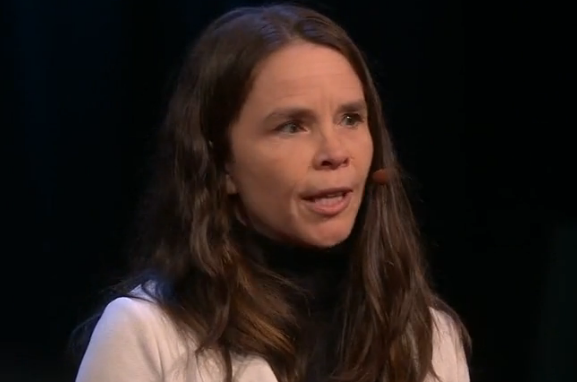In addition to those kinds of investments, we also need investments in research and development.
除了这些投资,我们还需要人们在研发项目中投资。
So what might that look like?
这意味着什么呢?
In 1966, the US invested about a half a percent of gross domestic product in the Apollo program.
1966年,美国百分之五十的GDP被用于投资阿波罗计划。
It got people safely to the moon and back to the earth.
该计划帮助人类安全地登上了月球,并顺利返回地球。
Half a percent of GDP today is about 100 billion dollars.
而在今天,一半的GDP大概是一千亿美金。
So knowing that direct air capture is one front in our fight against climate change,
所以当知道直接捕获空气和与气候变化做斗争是同一个战线后,
imagine that we could invest 20 percent, 20 billion dollars.
想象一下我们能够投资20%的GDP,两百亿美元。

Further, let's imagine that we could get the costs down to a 100 dollars a ton.
更进一步,让我们设想一下降低成本到100美金一吨。
That's going to be hard, but it's part of what makes my job fun.
这很困难,但也正是我工作中的乐趣所在。
And so what does that look like, 20 billion dollars, 100 dollars a ton?
两百亿美金,一百美金一吨,是个什么概念呢?
That requires us to build 200 synthetic forests, each capable of capturing a million tons of CO2 per year.
这需要我们建造二百个人工森林,每个人工森林一年能捕获一百万吨的二氧化碳。
That adds up to about five percent of US annual emissions.
这加起来相当于美国每年碳排放量的百分之五。
It doesn't sound like much. Turns out, it's actually significant.
听起来好像不多。实际上,效果已经相当明显了。
If you look at the emissions associated with long-haul trucking and commercial aircraft, they add up to about five percent.
如果你查看长途运输和商用飞机产生的碳排放,其合计总量就达到了百分之五左右。
Our dependence on liquid fuels makes these emissions really difficult to avoid.
我们对液体燃料的依赖使这样的碳排放量非常难以避免。
So this investment could absolutely be significant.
所以毋庸置疑,这项研究意义重大。



